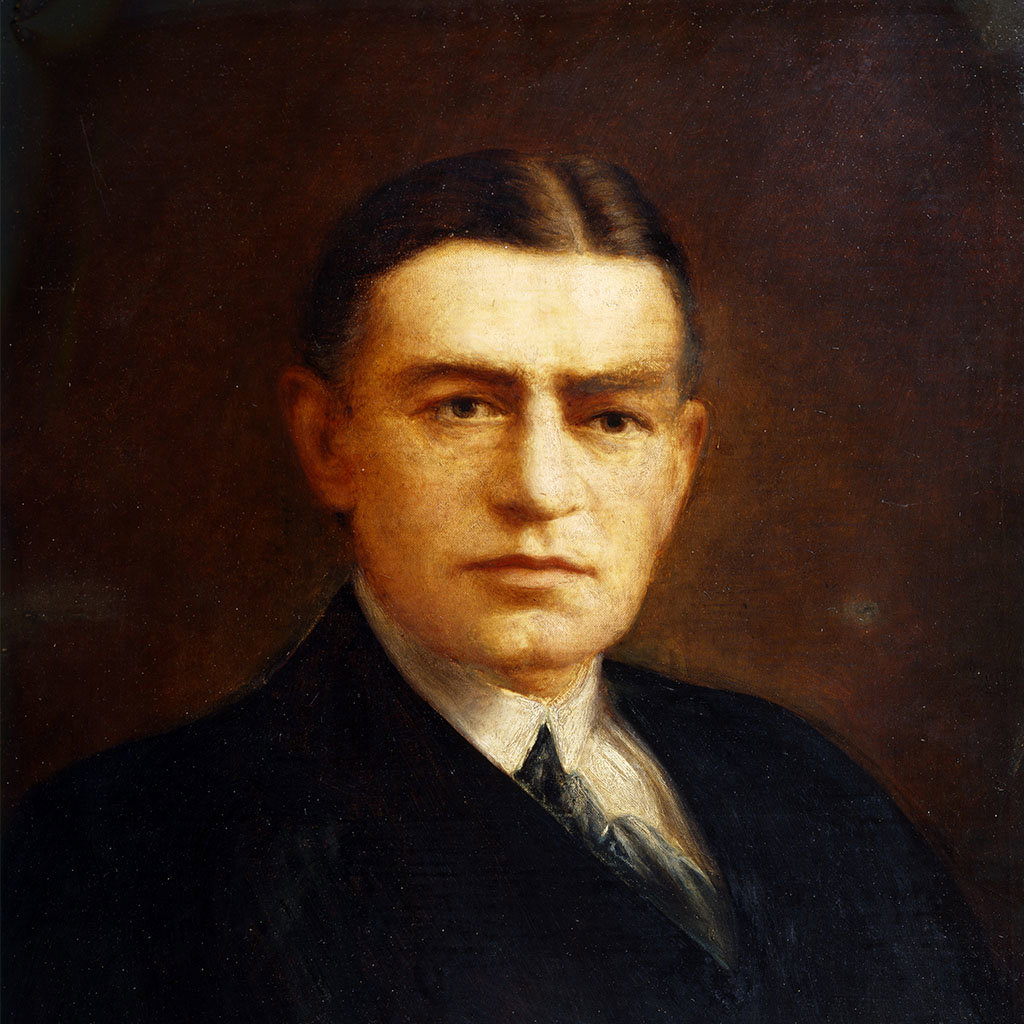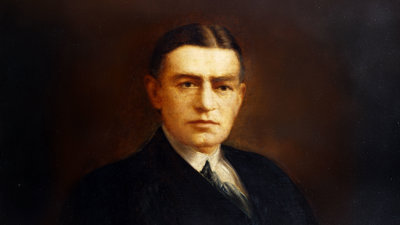Ernest Shackleton (1874-1922) was born in the town of Kilkea in County Kildare, Ireland in 1874 and at the age of 10 his family relocated to London where Shackleton attended Dulwich College. He was a restless child, not overly engaged by his studies so at 16 he joined the merchant navy.
Shackleton became a master mariner in 1898 and joined the Union-Castle Line sailing between Southampton and Cape Town. In 1900 he was serving aboard a troopship carrying soldiers to the Boer War when he met a young lieutenant called Cedric Longstaff who told Shackleton about the Antarctic expedition his father was helping to fund for the Royal Geographical Society.
The Discovery expedition
Through his connection with the Longstaff family, Shackleton obtained a position on the expedition as third officer to Captain Scott. The expedition, officially the National Antarctic Expedition but usually known as the Discovery expedition after the expedition ship, lasted from 1901 to 1904. During the expedition, Scott, Edward Adrian Wilson, and Shackleton set a new southern record by sledging to latitude 82°17’S in December 1902.
Although the expedition continued for another two years, Shackleton returned home after the sledging journey, considered unfit to continue by Captain Scott. Shackleton had been editor of the South Polar Times (SPT), a magazine created by the expedition members during the Antarctic winters and back in England he arranged for a facsimile of the SPT to be published.
The conquest of the South Pole
Taking part in the Discovery expedition gave Shackleton a taste for Antarctic exploration and he decided to lead his own expedition which would include some scientific work but would have as its main aim the conquest of the South Pole.
Shackleton’s expedition, the Nimrod expedition, was largely funded by the wealthy industrialist William Beardmore so that when Shackleton and his polar party found a way onto the polar plateau via a well-positioned glacier, Shackleton named it after his benefactor, the Beardmore Glacier.

The glacier was the key to Shackleton’s successful attainment of the polar plateau and the route to the South Pole. Eventually Shackleton and his men reached 88°23'S and were about 100 miles from the Pole before shortage of food and fuel compelled them to return to base.
Even though they had not reached the Pole, the South Magnetic Pole had been reached and Mount Erebus climbed for the first time. Their endeavours earned Shackleton a knighthood and the acclaim that he desired.
Shackleton's final return to the Antarctic on the Endurance
It would be five years before Shackleton could return to the Antarctic and in the meantime the Pole was reached, first by Roald Amundsen in December 1911 and then by Captain Scott in January 1912.
With the Pole attained, Shackleton began hatching a more ambitious plan, to cross the Antarctic continent from the Wedell Sea to the Ross Sea via the Pole. It would be 1914 before he was ready to launch the expedition and with war imminent, he sought and received approval from the British Government before setting off on the Imperial Trans-Antarctic expedition.
Unfortunately, his ship, the Endurance, was crushed in the ice of the Weddell Sea before even being unloaded so the expedition was aborted. After setting up camp on Elephant Island, Shackleton and three companions made a perilous 800-mile open boat journey in the 23-feet whale boat, James Caird to reach South Georgia where help could be found. Three months later the men on Elephant Island were rescued by a Chilean vessel called the Yelcho.
Shackleton made one more voyage to the Antarctic on the Shackleton-Rowett or Quest expedition. The purpose of this expedition was ill-defined. They reached South Georgia only for Shackleton to die of a heart attack at Grytviken in 1922.
Further reading
Fiennes, Sir Ranulph. Shackleton: Explorer. Leader. Legend. Harmondsworth, Penguin, 2022.
Mills, William J. Exploring polar frontiers: a historical encyclopedia. Santa Barbara: ABC-CLIO, 2003.
Kirwan, L. P. A history of Polar exploration. Harmondsworth: Penguin Books, 1962.
Mill, Hugh R. The Life of Sir Ernest Shackleton. London: William Heinemann, 1923.
Savours, Ann. "Shackleton, Sir Ernest Henry (1874–1922), Antarctic explorer." Oxford Dictionary of National Biography.
